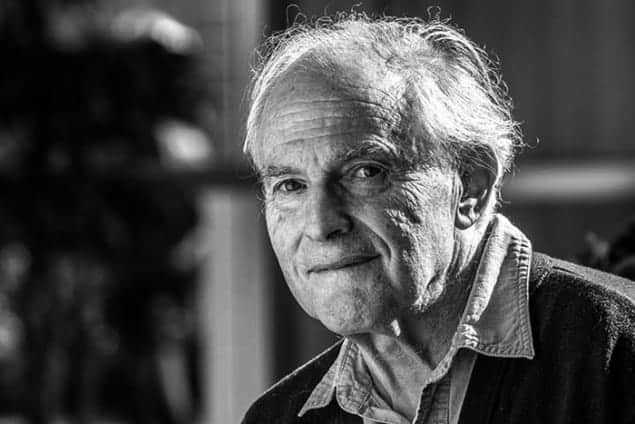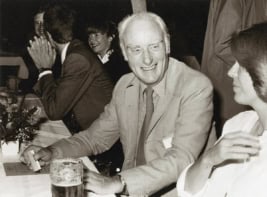
The chemist Harold Kroto, whose co-discovery of the carbon-60 molecule played an important role in the development of carbon-based nanotechnology, died on 30 April aged 76. Kroto shared the 1996 Nobel Prize for Chemistry with Robert Curl and Richard Smalley for their discovery a decade earlier that 60 carbon atoms could form hollow ball-like molecules. The structures were dubbed buckminsterfullerene, or “buckyballs”, because of their resemblance to the geodesic domes designed by the American architect Buckminster Fuller.
Kroto was born in Wisbech, UK, in 1939 to German parents who had fled their homeland in 1937 because Kroto’s father was Jewish. Growing up in Lancashire, Kroto excelled in chemistry, completing a PhD in microwave spectroscopy at the University of Sheffield in 1964. He continued his work on spectroscopy at the National Research Council in Ottawa, Canada, and then at Bell Labs in New Jersey.
In 1966 Kroto returned to the UK to join the University of Sussex, remaining there until his retirement in 2004. That year he accepted a position at Florida State University, where he could continue his research and also pursue his interest in using the Internet for educational outreach.
Interstellar chemistry
While at Sussex, Kroto became interested in “interstellar chemistry”, which uses microwave spectroscopy to work out which molecules are present in the vast clouds of gas in space. In the 1970s Kroto and colleagues began to realize that the structures of the carbon molecules they were detecting in space were not as expected, if one assumes that they were formed at relatively low temperatures and densities. Instead, Kroto surmised, the molecules must be made when material is ejected at high pressure and temperature from aging stars that are rich in carbon.
Kroto had the chance to test this idea in 1985, when he collaborated with Smalley and Curl at Rice University in Houston, Texas. Smalley had built a facility that could simulate the conditions in the plasma atmosphere of a carbon star by using a powerful laser to vaporize a graphite sample. “In that experiment, something happened that no-one predicted,” recalled Kroto in an interview at the Lindau Nobel Laureate Meeting in 2000.
The team had unexpectedly made carbon-60, a molecule that resembles a soccer ball and comprises 20 hexagons and 12 pentagons with a carbon atom at each vertex. The discovery that carbon atoms would form a one-atom-thick sheet that enveloped a hollow region was described by Kroto in 2000 as “a fundamental paradigm shift in our understanding of carbon and sheet materials”.
2D carbon allotropes
The discovery of carbon-60 turned out to be an important early milestone in the study of 2D carbon allotropes, which is a major research area in nanotechnology. These materials also include carbon nanotubes (CNTs) – rolled-up sheets of carbon – and graphene, which is a flat sheet of carbon just one atom thick. Unlike graphene and CNTs, which have been used to create a wide range of prototype technological devices, there have not been many practical applications for carbon-60. One potentially promising current avenue of research is the study of crystalline materials made from carbon-60 molecules, which have interesting superconducting and other electronic properties.
Kroto also had a deep and long-standing interest in science education. In 1995 he joined forces with the BBC producer Patrick Reams to create the Vega Science Trust, which produced educational television programmes until 2012. In 2006 Kroto founded Global Educational Outreach for Science Engineering and Technology (Geoset) at Florida State University. Geoset provides free educational materials, mostly in the form of video presentations.
Kroto described graphic design as his “first love” and won several design awards. In 2001 one of his designs appeared on a UK second-class stamp commemorating the 100th anniversary of the Nobel Prize for Chemistry.



